General info about vibration dampers
What is a vibration damper? Where are they used and for what purpose?
With any type of rotating machinery, be it motors, compressors, pumps, generators or the like, vibrations occur. These vibrations can be transferred to the surrounding structure, and will very often cause noisy vibrations. Vibrations can be disruptive and potentially dangerous to human health and destructive to equipment. By replacing the fixed connection between machine and surface with a flexible connection, this will contribute to dampening the transmitted vibrations. The investment is usually small, but the benefits are big. Machines and equipment have an extended lifespan and the discomfort for employees and colleagues caused by vibrations in the structure is reduced. Think of a washing machine that spins at 1600 rpm. If the washing machine had not been fitted with vibration dampers (or adjustable feet with rubber coating), then the machine will not remain stationary, but will move around on the surface and hit walls or other things.
We can help with calculations
When you need to find the rigth damper please consider the following:
- Machine weight – How much weight must the dampers carry? Is the weight of the unit evenly distributed?
- Pay special attention to whether there is an even distribution of the plant's weight on the support points, or whether the weight may be on one side.
- Machine type – is it a stationary or mobile plant? Is it a plant that works with vibrations?
- RPM/frequency – How high RPM is expected?
- Environment - Is the surface flat? Where is the machinery located? Is there water/salt in the air? Is there a need for extensive cleaning of and around the dampers?
We will be happy to assist you choose the right vibration damping solutions.
Material
Rubber is widely used for vibration absorption because rubber has very high elasticity, excellent mechanical characteristics and is available in different hardnesses and can also be attached to metal. Rubber provides a lot of design opportunities and characteristics that suit the vast majority of tasks.
Typical rubber types are NR, NBR, EPDM and silicone. Which one to use depends on the environment. The most used material is by far NR – natural rubber, which is also the material with the best mechanical characteristics and which is also reasonably priced.
Al metal parts of the standard vibration damper are made from galvanized ST37 steel. All standard cylindrical dampers and large parts of the rest of the program can be supplied in A2 stainless steel and in A4 stainless steel.
Standard vibration dampers
Used to dampen vibrations from stationary installations – electric motors, pumps, compressors. These can also be used as buffers or feet/machine shoes with an outer or inner thread - or for mounting in a construction closer to the noise-producing element with two outer and/or inner threads.
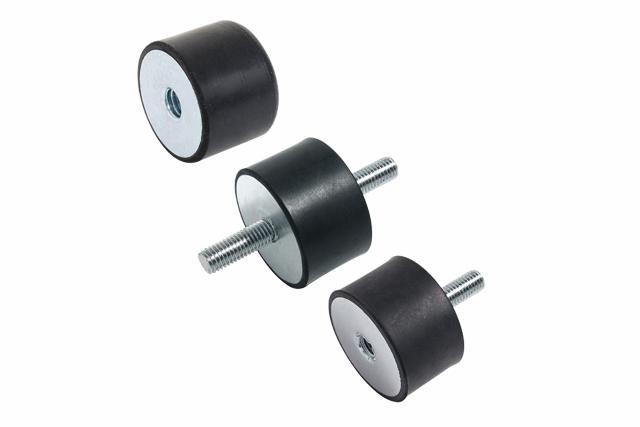
Buffer types
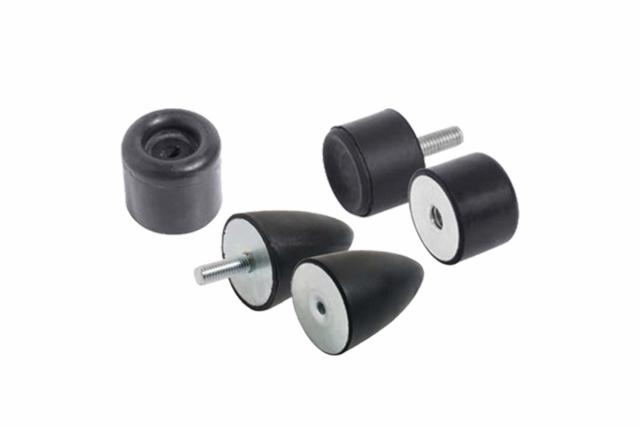
Machine shoe – with and without spindle
With spindle that allows you to level the equipment by adjusting the spindle. Suitable for stationary installations in a wide range of types and sizes. Eg. vibration-damping levelling element E+G LW.A (left) or E+G AVG flange vibration damper (right)
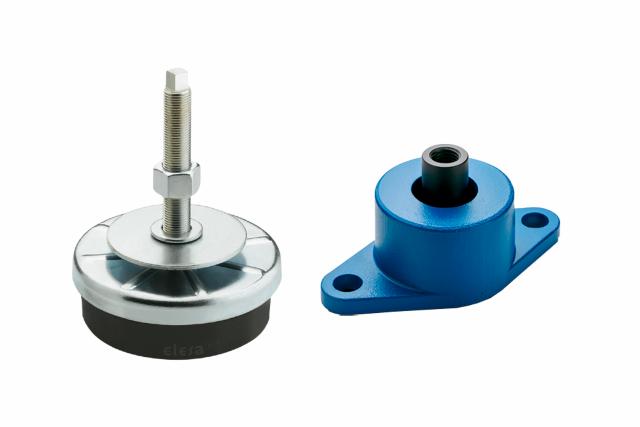
Vibration dampers sandwich/rails
Used for dampening noise and vibrations from larger stationary machines – for example processing plants or punching machines. Sandwich dampers can absorb smaller forces in, for example, sorting plants and vibrators. Rails can be post-processed, typically the length and thread can be adjusted.
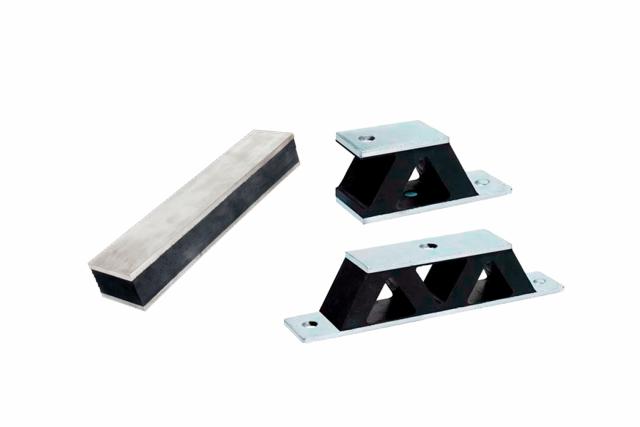
Flange types (break-safe)
Typically used for mobile installations and are designed so that they do not fall apart if the rubber should fail. For example for equipment mounted in construction machines or on ships.
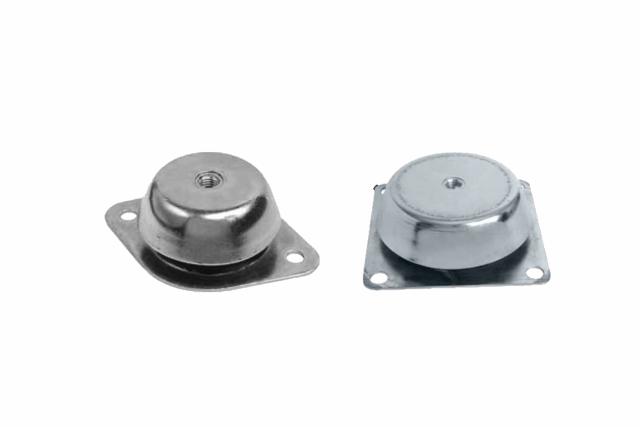
Wire isolators
These are particularly suitable for use in HVAC, pumps, sewage treatment plants and mobile plants, railways and marine. These are also suitable for transport by ship of e.g. wings, cars or machines.
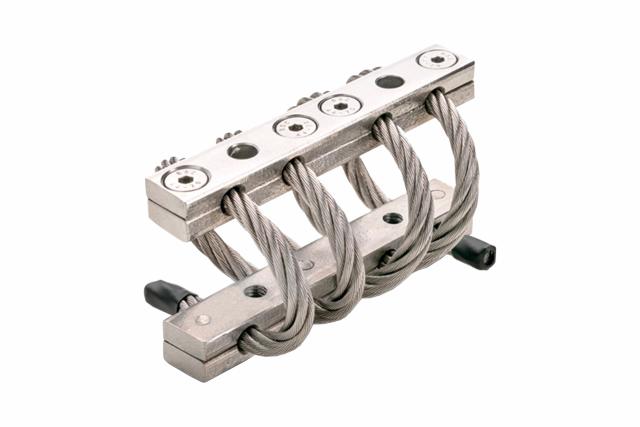
Spring dampers
For vibration isolation of HVAC, compressors, refrigeration units, centrifuges and generators.
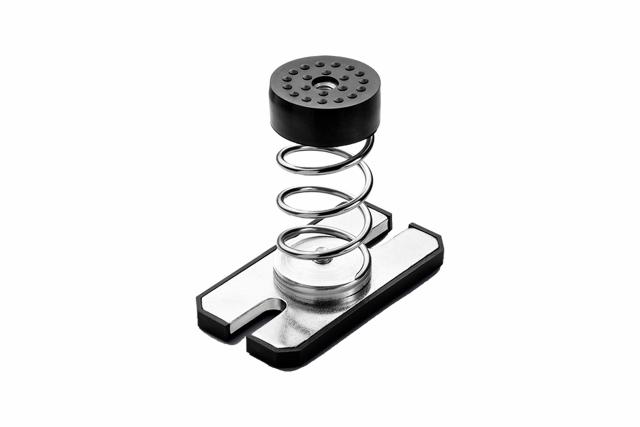
Metal cushion
Particularly suitable for electromechanical equipment, industrial cooling applications, pipe support and when compression vibration isolation is desired.
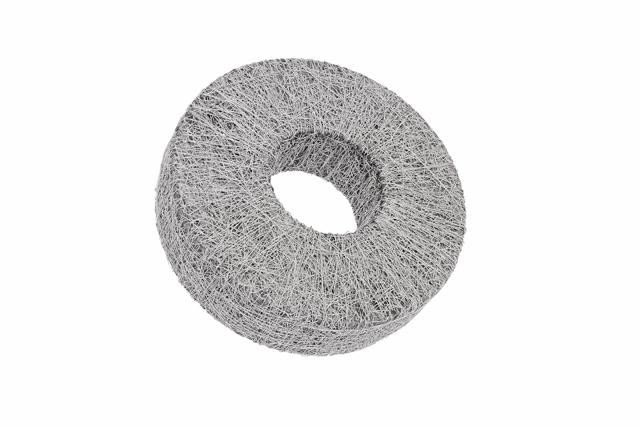
Need help?
If you do not find the right damper for your needs on this page, or if you need guidance, then feel free to contact us.
